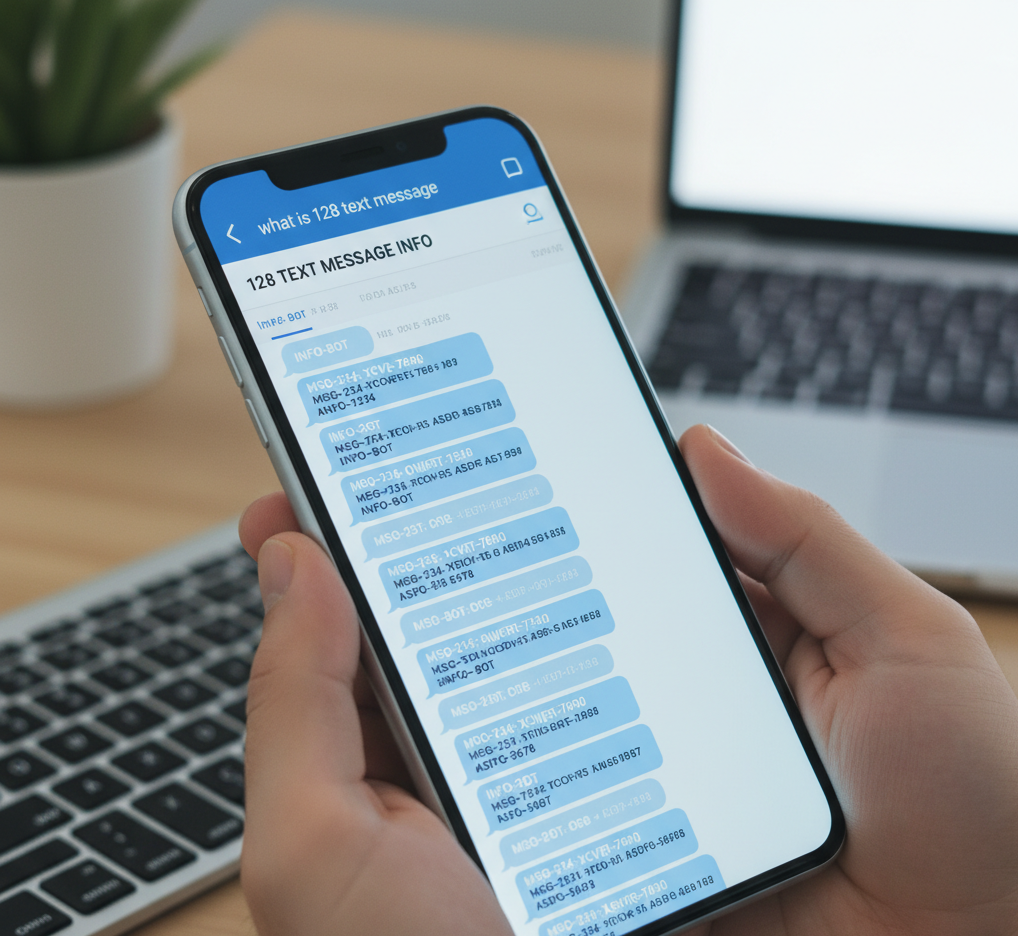If you’ve ever scrutinized your mobile phone bill or digital usage logs from your carrier, particularly with T-Mobile in the United States, you may have encountered a puzzling entry: a text message or “short code” attributed to the number 128. Unlike typical texts from friends, family, or even marketing alerts, this entry often lacks a clear sender or content. The question, “what is 128 text message”, is a common one, sparking confusion and sometimes concern among users.
This article will decode the mystery of the 128 short code, explaining its true function within the mobile network and why it appears on your usage statement.
Understanding Short Codes in the U.S.
Before diving into the specifics of the 128 code, it’s helpful to understand what an SMS short code is.
What Are SMS Short Codes?
In the United States, SMS (Short Message Service) short codes are typically 5- or 6-digit numbers, significantly shorter than standard 10-digit phone numbers. They are used by businesses, organizations, and—critically—mobile carriers for high-volume, two-way messaging. You interact with them regularly for:
- Marketing Alerts: Texting a keyword like “JOIN” to a short code for coupons or promotions.
- Contests and Polling: Texting a vote or entry.
- Service Notifications: Receiving appointment reminders or bank alerts.
These common short codes are designed for customer interaction. The 128 code, however, operates on a different, more internal level.
Decoding the 128 Text Message
The entry logged as a 128 text message is generally not a message in the traditional sense, but rather a system-level notification or activity log generated by your mobile carrier’s network. It is almost always an internal code used to track specific backend functions on your account.

A System Code, Not a Conversation
The most important takeaway is this: the 128 short code is an internal note used by the carrier, not a person or company attempting to text you. It appears in your usage logs as a message entry because the network logs all “messaging” activity, even the automated, system-driven kind.
For the vast majority of users in the U.S., particularly those on the T-Mobile network, the 128 short code is associated with normal, everyday phone functions.
Common Triggers for the 128 Short Code
Based on user reports and carrier clarifications, the appearance of the 128 short code in your usage details is frequently linked to a few specific activities:
- Voicemail Notifications: When someone leaves you a voicemail, the network must send a notification to your device to alert you. This system notification—the “message” that tells your phone “you have a new voicemail”—is often logged under the 128 short code.
- Device Synchronization: Users who have multiple devices connected to their primary phone number (such as an Apple Watch, tablet, or a secondary device using a service like T-Mobile DIGITS) often report seeing the 128 code. It can represent the background communication and syncing required to keep these connected devices updated and operating correctly.
- Account Management Commands: While some T-Mobile services use longer short codes for account balance checks or feature activation, the 128 code can sometimes be a routing or logging mechanism tied to these background processes.
Addressing User Concerns
When people ask, “what is 128 text message”, their next question is usually: “Should I be worried?”
Security and Billing: No Need for Alarm
In almost all cases, seeing the 128 short code is completely benign and does not indicate a security issue or an unwanted subscription.
- Scam Risk: It is highly unlikely to be a scammer, as this code represents internal carrier routing. Scammers and phishers typically use conventional-looking short codes or 10-digit numbers to try and trick you into clicking a link or providing personal information. The 128 code is simply a network log.
- Billing: Since the 128 code logs an event rather than a traditional sent or received message, it is usually not associated with an extra charge, especially if your plan includes unlimited text messaging. If you are on an older, pay-per-message plan, however, any logged “message” might technically count against your usage or incur a small fee, which is why it appears on the bill in the first place.
What to Do If You See It
If you notice frequent entries from the 128 short code, the best action is to:
- Check the Time: Compare the timestamp of the 128 entry with your own activity. Did you just receive a voicemail? Did you put your phone on the charger, triggering a synchronization with a connected wearable device?
- Review Your Plan: If you have billing concerns, check your mobile plan details or contact T-Mobile customer support directly for confirmation on how system messages are billed under your specific agreement.
- Maintain Vigilance: While the 128 code itself is harmless, it’s always wise to be cautious of other unfamiliar messages. Never click suspicious links or provide personal data in response to an unsolicited text message from any number.
conclusion
The mysterious 128 text message is less of a message and more of a digital footprint—a peek behind the curtain at the normal, healthy, and complex workings of your mobile phone network. It’s a sign that your device and carrier are doing their job, keeping your service running smoothly and your voicemails delivered.
لا تعليق